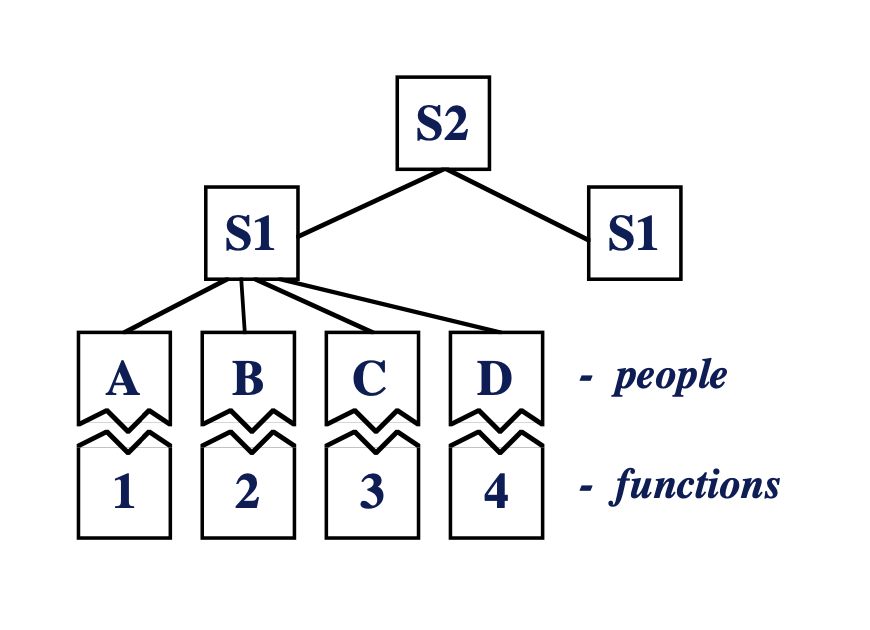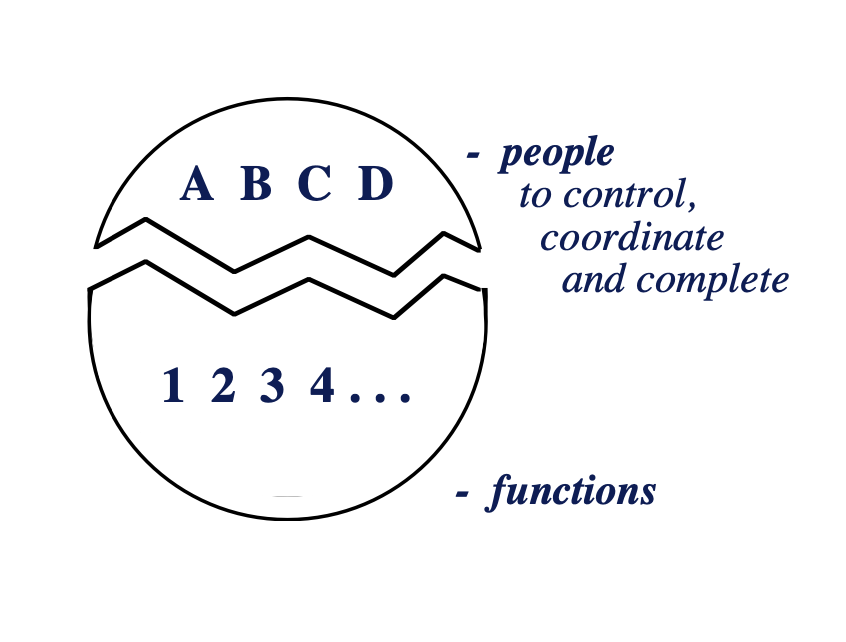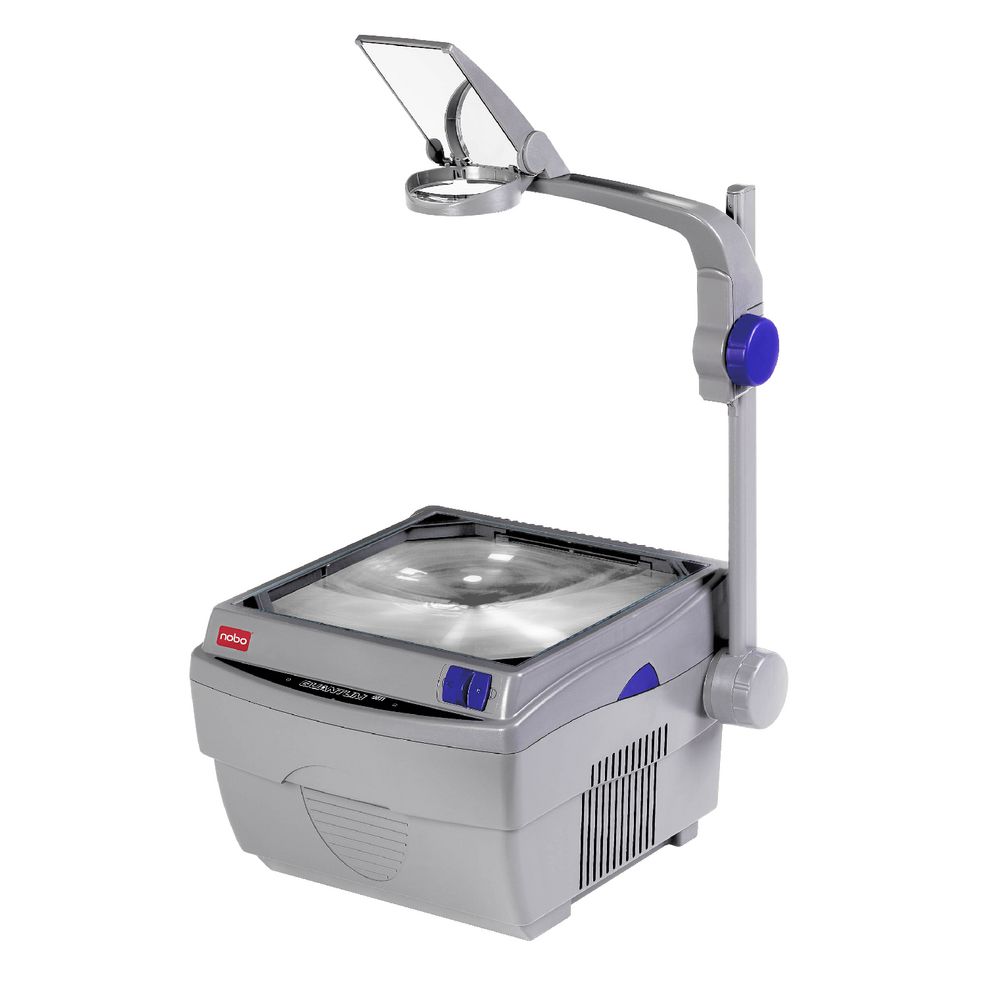Design Principle 1 and 2
Open systems theorists have defined some design principles that can be observed in organisational structures. Design Principle 1 (DP1) – the traditional hierarchical structure and its democratic alternative, Design Principle 2 (DP2). The choice of Design principle determines the operation of an organisation or community.
DP1
In this design principle, a hierarchy of dominance rules the organisation through the control of the function by people who are in the positions of power. The manager sits outside and ‘above’ the team, coordination, control and goals come from a level above where the work is actually performed.
In order to respond to changes in the market a DP1 organisation maintains ‘redundant parts‘ that is, as one part fails another replaces it. An extreme example is a traditional assembly line where the workers are viewed as extensions of the machinery of the line and can be replaced.
DP1 structures disempower the people doing the work. By taking responsibility away from people to plan and control their own concerns, the DP1 principle weakens the capacity for democratic operation to be present.

Design Principle 1 produces bureaucratic organisations where responsibility for coordination and control are located one level above where the work is being done.
DP2
Design Principle 2 organisations are those where responsibility for coordination and control of the work is relocated with those who are actually doing the work, without needing traditional command and control structures.
DP2 is also characterised by the lack of a functionally aligned structure i.e. people are multi skilled and wear multiple ‘hats’ and we might not need all of their skills at the one time. Therefore a DP2 structure is geared to respond to changes in the market because its design includes a redundancy of function, that is, the team are skilled and empowered to adapt and respond to changes in their environment, by design.
The defining difference is that coordination, control and goal-setting, now happen within the team, this is the essence of a democratic structure, and provides people with the conditions for meaningful participation.
DP2 organisations are by design more effective at generating value and more empowering to work within.

Design Principle 2 produces more open organisations in which people are skilled at a wide variety of social and technical tasks and functions. The structure takes the form of a self- managing team that is responsible for the control, coordination, and completion of its own work.
The 3rd Design Principle – Laissez faire
In OST a third design principle has been identified, where the design is neither deliberately DP1 nor intentionally DP2, it falls somewhere in between. This is known as Laissez faire where nothing officially guides the design or operation, and therefore chaos rules the system. In OST this is considered even worse than DP1 because it tends to favour negative behaviours such as workplace bullying and decision making based on influencing.
